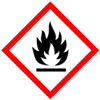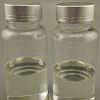| We are manufacturers of Propionic Acid FCC Food Grade USP NF, Pharmaceutical Excipients in India. We offer Halal and Kosher Propionic Acid FCC Food Grade USP NF made in an ISO9001, ISO22000 (FSSC22000) cGMP and GLP certified facility.. |
Propionic Acid SDS GHS of Manufacturers Manufacturers Suppliers, CAS Number:79-09-4
Specifications Sheet of Propionic Acid FCC Food Grade USP NF Manufacturers
Propionic Acid SDS, Safety Data Sheet
MSDS
Section 1 - Chemical Product and Company Identification
Product Name & Other Names: Propionic Acid or Propanoic acid or Propanyl acid or Acid C3.
CAS#: 79-09-4
EINECS EC Number: 201-176-3
Molecular Formula: C3H6O2
Molecular Weight: 74,08
Relevant uses and uses advised against (if any): Industrial Manufacturing.
Suppliers: As per letterhead.
Section 2 - Hazards Identification
GHS, Globally Harmonized System Classification in accordance with 29 CFR 1910
Classification according to Regulation (EC) No 1272/2008
Flammable liquids Category 3, H226
Skin corrosion Category 1B, H314
Specific target organ toxicity - single exposure Category 3, Respiratory system, H335
Labeling according to GHS & Regulation (EC) No 1272/2008
GHS Label Elements  Combustible Liquid |
GHS Label Elements |
Signal Words: Danger
Hazard statements:
H226: Flammable liquid and vapor.
H314: Causes severe skin burns and eye damage.
H335: May cause respiratory irritation.
Precautionary statements:
P210: Keep away from heat, sparks, open flames, hot surfaces. - No smoking.
P233: Keep container tightly closed.
P240: Ground/bond container and receiving equipment.
P241: Use explosion-proof electrical, ventilating, lighting equipment.
P242 - Use only non-sparking tools.
P243: Take precautionary measures against static discharge.
P260: Do not breathe mist, vapors, spray.
P264: Wash exposed skin thoroughly after handling.
P280: Wear protective clothing, protective gloves, eye protection, face protection.
P301+P330+P331: IF SWALLOWED: rinse mouth. Do NOT induce vomiting.
P303+P361+P353: IF ON SKIN (or hair): Remove/Take off immediately all contaminated clothing. Rinse skin with water/shower.
P304+P340: IF INHALED: remove victim to fresh air and keep at rest in a position comfortable for breathing.
P305+P351+P338: If in eyes: Rinse cautiously with water for several minutes. Remove contact lenses, if present and easy to do. Continue rinsing.
P314: Get Medical advice/attention if you feel unwell.
P337+ P313: If eye irritation persists: Get medical advice/ attention.
P360: Rinse immediately contaminated clothing and skin with plenty of water before removing clothes.
P370+P378: In case of fire: Use carbon dioxide (CO2), powder, alcohol-resistant foam for extinction.
P403+P235: Store in a well-ventilated place. Keep cool.
Classification according to EU Directives 67/548/EEC or 1999/45/EC:
Hazard Symbols:
F Flammable
C Corrosive
Risk Phrases:
R10 = Flammable.
R34 = Causes burns.
R37 = Irritating to respiratory system.
R41 Risk of serious damage to eyes.
Section 3 - Composition/Information on Ingredients
Product Name & Other Names: Propionic Acid or Propanoic acid or Propanyl acid or Acid C3.
CAS#: 79-09-4
EINECS EC Number: 201-176-3
Percent: 99-100% on dry basis. Dilution is always with water.
Section 4 - First Aid Measures
Always consult a physician after the first aid is given.
Eyes: Immediately flush eyes with plenty of water for at least 15 minutes, occasionally lifting the upper and lower eyelids. Get medical aid. Do NOT allow victim to rub or keep eyes closed.
Skin: Flush skin with plenty of soap and water for at least 15 minutes while removing contaminated clothing and shoes. Get medical aid if irritation develops or persists. Wash clothing before reuse.
Ingestion: Do NOT induce vomiting. If victim is conscious and alert, give 2-4 cupful of milk or water. Never give anything by mouth to an unconscious person. Get medical aid.
Inhalation: Remove from exposure to fresh air immediately. If breathing is difficult, give oxygen. Get medical aid. Do NOT use mouth-to-mouth resuscitation. If breathing has ceased apply artificial respiration using oxygen and a suitable mechanical device such as a bag and a mask.
Section 5 - Fire Fighting Measures
General Information: As in any fire, wear a self-contained breathing apparatus in pressure-demand, MSHA/NIOSH (approved or equivalent), and full protective gear. During a fire, irritating and highly toxic gases may be generated by thermal decomposition or combustion.
Flammable Limits: LOWER: 2.9% UPPER: 12.1%
Flash Point: 52C - 54C / 126F - 130F (closed cup)
Auto Ignition Temperature: 485C / 905F
Extinguishing Media: Use water spray, alcohol-resistant foam, dry chemical or carbon dioxide. Cool containing vessels with water jet to prevent pressure build-up, auto-ignition, or explosion.
Special Information: In the event of a fire, wear full protective clothing and NIOSH-approved self-contained breathing apparatus with full face piece operated in the pressure demand or other positive pressure mode. At high temperatures under fire conditions, it may produce toxic or irritating fumes. Fire-extinguishing work is done from the windward and the suitable fire-extinguishing method according to the surrounding situation is used.
Section 6 - Accidental Release Measures
Personal precautions, protective equipment, and emergency procedures: Avoid breathing dust/fumes/gas/mist/vapors/spray. Ensure adequate ventilation. Use individual protective equipment (waterproof boots, suitable protective clothing, safety glasses, etc.). Restrict unprotected personnel from the area. Prevent any contact with hot surfaces.
Environmental precautions: Do not let the product enter drains, soil, or water sources.
Methods and materials used for containment Cleanup procedures and Storage: Contain spilled material. Use proper personal protective equipment. Restrict unprotected personnel from the area. Remove all ignition sources and ventilate area. Contain the spill with sand or other inert absorbent material, neutralize with sodium bicarbonate or calcium hydroxide, and deposit in a sealed bag or container. Use water spray to dilute spill to a non-flammable mixture. Wash area with soap and water. Use water spray to disperse the gas/vapor. Remove all sources of ignition. Use a spark-proof tool. Provide ventilation. Cover with material such as dry soda ash or calcium carbonate and place into a closed container for disposal.
Section 7 - Handling and Storage
Precautions for safe handling: Apply according to good manufacturing and industrial hygiene practices. Ensure proper ventilation. Wash thoroughly after handling. Do not drink, eat, or smoke while handling. Avoid contact with skin, eyes, and clothing. Minimize dust generation. Avoid breathing dust/fumes/gas/mist/vapors/spray. Avoid contact with eyes, skin, and clothing. Keep container tightly closed. Avoid ingestion and inhalation. Use individual protective equipment (waterproof boots, suitable protective clothing, safety glasses, etc.).
Conditions for safe storage, including any incompatibilities: Store in cool, dry, and ventilated area away from heat sources and protected from sunlight in tightly closed original container. Do not leave the material container open. Store protected from heat, sparks and ignition sources and incompatible materials. Do not store with incompatible materials like oxidizing agents, strong alkalis, and metals.
Section 8 - Exposure Controls, Personal Protection
Airborne Exposure Limits: Airborne Exposure Limits:
ACGIH Threshold Limit Value (TLV): 10 ppm (TWA)
OSHA PEL 10ppm / 30mg/m 3
Ventilation System: A system of local and/or general exhaust is recommended to keep employee exposures as low as possible. Local exhaust ventilation is generally preferred because it can control the emissions of the contaminant at its source, preventing dispersion of it into the general work area.
Personal Respirators (NIOSH Approved): For conditions of use where exposure to dust or mist is apparent and engineering controls are not feasible, a particulate respirator (NIOSH type N95 or better filters) may be worn. If oil particles (e.g. lubricants, cutting fluids, glycerin, etc.) are present, use a NIOSH type R or P filter.
Skin Protection: Wear impervious protective clothing, including boots, gloves, lab coat, apron or coveralls, as appropriate, to prevent skin contact.
Eye Protection: Use chemical safety goggles and/or full face shield where dusting or splashing of solutions is possible. Maintain eye wash fountain and quick-drench facilities in work area of Propionic acid.
Other Control Measures: Maintain good housekeeping in work area.
Section 9 - Physical and Chemical Properties
Appearance: Clear Liquid
Odor: Rancid
Odor threshold: No data found.
pH: 2-3 for 1% solution, 2.4 (1.0M solution)
Relative density: 0.993
Boiling Point: 141C (244.5F)
Melting Point: -20.8C (-6F)
Flash Point: 52C - 54C / 126F - 130F (closed cup)
Auto Ignition Temperature: 485C / 905F
Decomposition temperature: No data found.
Upper/lower flammability or explosive limits: No data found.
Vapor pressure: No data found.
Vapor density: No data found.
Evaporation rate: No data found.
Flammability (solid, gas): No data found.
Partition coefficient: n-octanol/water: No data found.
Solubility: Soluble in water
Viscosity: No data found.
Molecular Formula: C3H6O2
Molecular Weight: 74,08
Section 10 - Stability and Reactivity
Chemical Stability: Propionic acid is stable under normal temperatures and pressures.
Conditions to Avoid: Incompatible materials, exposure to heat, spark.
Incompatibilities with Other Materials: Oxidizing agents, strong alkalis and metals.
Hazardous Decomposition Products: Carbon monoxide, irritating and toxic fumes and gases, carbon dioxide.
Hazardous Polymerization: Will not occur.
Section 11 - Toxicological Information
LD50 Oral - Rat - male and female - 3.455,1 mg/kg
LC50 Inhalation - Rat - male and female - 4 h - > 20 mg/l
LD50 Dermal - Rat - female - 3.235 mg/kg
LD50 Intravenous - Mouse - 625 mg/kg
LD50 Parenteral - Rat - 3.500 mg/kg
Carcinogenicity: No component of this product present at levels greater than or equal to 0.1% is identified as possible or confirmed human carcinogen by IARC, ACGIH, OSHA and NTP.
Mutagenic Effects: No data found.
Developmental Toxicity: No data found.
Reproductive Effects: No data found.
Section 12 - Ecological Information
Acute toxicity:
Fish: LC-50 (golden orfe, 96 h): > 1,000 mg/l
Aquatic invertebrates: EC-50 (Water Flea, 48 h): > 500 mg/l
Persistence and Degradability: Unlikely to persist due to water solubility.
Mobility: Likely to be mobile due to water solubility.
Bioaccumulation/ Accumulation: No information available.
Results of PBT and vPvB assessment: This substance/mixture contains no components considered to be either persistent, bioaccumulative and toxic (PBT), or very persistent and very bioaccumulative (vPvB) at levels of 0.1% or higher.
Section 13 - Disposal Considerations
Whatever cannot be saved for recovery or recycling should be managed in an appropriate and approved waste disposal facility. Processing use or contamination of this product may change the waste management options.
Section 14 - Transport Information
DOT USA, TDG Canada & ADR/RID Europe
UN number: 3463
Class: 8 (3); Packing group: II
IMDG/IMO
UN number: 3463
Class: 8 (3); Packing group: II
IATA
UN number: 3463
Class: 8 (3); Packing group: II
Section 15 - Regulatory Information
USA:
California Proposition 65: Not listed.
SARA 311/312 Hazards: See section 2.
Section 16 - Additional Information
European Labeling in Accordance with EC Directives:
H226: Flammable liquid and vapor.
H314: Causes severe skin burns and eye damage.
H335: May cause respiratory irritation.
Disclaimer:
****************************
Our company provides this MSDS sheet in good faith but makes no representation as to its comprehensiveness or accuracy. In no case shall our company be liable to loss or damages by the product user.
****************************
Propionic Acid FCC Food Grade USP NF Manufacturers Suppliers Exporters at:
Anmol Chemicals
S-8, SARIFA MANSION, 2ND FLANK ROAD, CHINCHBUNDER, MUMBAI 400009, INDIA
TEL: (OFFICE) 91-22-23770100, 23726950, 23774610, 23723564 - FAX: 91-22-23728264
e-mail: anmolc@mtnl.net.in

Copyright and Usual Disclaimer is Applicable. 19 February, 2022





